After four years of columns on picture books as tools to build peace, we are bringing this chapter of the story to a close. We have enjoyed our time reflecting in community, and we are deeply grateful for your readership and engagement. To find closure, we would like to reflect and highlight some of our own learnings along the way.
[Ed. note: Click on a book cover, graphic, or photo to learn more about the book or read the Peace-ology article in which that image was first used.]
Caren, working on Peace-ology over the years, what new insights did you have on building peace?
Caren: I remember you and me sitting at Gigi’s Café in Minneapolis — pre-COVID — as new writing friends and asking ourselves what it would mean to embark on a series of articles about peace and picture books. At the time, we had no idea where this journey would take us. What I’m most proud about is our sustained, deliberate pursuit of what peace means as we stepped into each article. Writing about peace. Reading about peace. Sharing ideas of the many pathways to peace. Our work together, Ellie, has changed me in ways that are not only intellectual and emotional, but physical. My breathing has changed. I breathe in and out more slowly and deeply to calm myself when I’m in a moment of fluster. My heart may be the same size, but it feels bigger as it opens to new ways of caring. I recognize the electrical wiring of kindness — how one small act of kindness can bring new and brighter bodily energy. One act of kindness can create a chain-reaction of small kindnesses from one person to the next. Over our four years together, Peace-ology has created chain-reactions of peacemaking and peace friendships. The light from your friendship and other friendships we’ve made through Peace-ology have helped sustain me, particularly in these troubled times. Therein lies the hope.
What about you, Ellie?
Ellie: In creating Peace-ology over the years, I have come to think about making peace as a body posture we take on in moving through the world. Every moment, there is an opportunity to opt into the work of making peace. We can make peace with our bodies, with other people, in community, and at the institutional and systemic level. This is the work of our lives. It is never done, so we cultivate a sustainable pace. In doing this, we make ourselves safe to young people who see the hurt in the world and want so badly to join in the peacemaking. Books and conversations with these young people matter so much, and so does modeling peacemaking in a way that sparks their curiosity and imagination. They can be our teachers in our work together.
How did writing about picture books as peace building tools shift how you think about the importance of picture books?
Caren: Picture books are not just for children. They are for all of us. I’ve been struck by the intergenerational power of picture books with peacemaking themes. They provide the seeds for necessary discussion in a circle on a classroom rug, at the dinner table, in the car driving at night. Children are deep thinkers if you listen carefully and with curiosity. Children want to understand their world. They want to talk about how to find ways out of difficult situations. They look for upstanders who demonstrate how to find the courage to make a difference. More than ever, I’m a believer in the picture book form to deliver both the story and the images in sharp relief, so much so the feeling of a particular story can stay with a reader for a life time.
What about you, Ellie?
Ellie: I agree, Caren. After publishing four books for adults, I published my first picture book while we were writing Peace-ology. I watched adults buy the book for the children in their lives, in part because sometimes it is easier to help young people engage in peace than it is to turn toward the work ourselves. Again and again, the adults would tell me how much they liked the book and learned from it. They thought the book was for the kids, but it changed them, too. Picture books are for us all, and they are amazing tools to facilitate these sacred intergenerational conversations where we can all learn and grow together. In writing a picture book, I also learned more deeply how the words of a picture book work with art to tell a story that is rich and dense with beauty. Sometimes peace work transcends words, and art can capture magic in a way words fall short. Readers young and old can bring their imaginations and hearts to the page and be moved by the visual story.
Did writing the Peace-ology column influence how you think about or go about writing your own picture books?
Caren: I am drawn to stories that reveal moments of social breakthroughs. As a nonfiction writer, I look for stories about seemingly ordinary people who find the courage to do extraordinary acts to help others without asking for reward. These moments and acts are transformational. I’ve come to understand if you heal yourself, you help heal the world. If you help heal the world, you help heal yourself. This is what I’ve learned writing for children and young adults.
And you, Ellie?
Ellie: Remarkable Rose is based on the true story of a girl who loved to play soccer. She was told by her teachers and parents that in Kibera, girls don’t play. They are supposed to help their moms with chores and focus on school. But Rose felt happy and free when she ran and kicked her ball. Not playing would have turned her into a peacekeeper, not making the adults mad, but she chose to make peace in her body and join a girls’ team, which took courage. The girls are now women who continue to work for gender equity in ways that transform their communities. Peace-ology was the undercurrent buoying me as I wrote, telling the story of Rose as a peace maker. And I am so grateful. Sometimes peace looks like listening to the yes inside your body and allowing that yes to lead you bravely into community work.
What books and themes that we chose have stuck with you over time?
Caren: I’ve so enjoyed writing all our articles. Each one encouraged us to go deeper into the complexity of peace. Through story, we’ve learned there is a literacy to peace, just as there is a literacy to reading. The series of Peace-ology articles that focused on “higher ground” brought together four of us as authors: educational psychologist Joyce Bonafield-Pierce, elementary art teacher Renee Dauk-Bleese , you, and me. I loved how Renee incorporated the power of picture books, and the concept of higher ground into art projects for her elementary students. We watched how the atmosphere in her art room changed as students discussed, drew, and offered gifts of peace to one another and as service projects. Even when a year had passed, Renee’s students still remembered which “higher ground” words they chose, needed most, and had put in their pockets to keep with them — words, such as courage, patience, listening, kindness. What happened in Renee’s art room through peace, art, and picture books was transformational.
And you, Ellie?
Ellie: It is so hard to pick one! I come back again and again to the peace corner that Renee Dauk-Bleese built in her classroom for her students, and I connect that to the book The Phone Booth in Mr. Hirota’s Garden. Sometimes the idea of peace can stay so vague, I love the idea of creating a real, tangible space for our bodies to associate with peace. When Renee or her students need a little space to regulate their nervous systems, they can go rock and breathe in the peace corner. Similarly, the phone booth becomes a place where characters in the book can go and grieve. The intentionality around creating a space for the work of peace reminds us that peace is a practice we cultivate over time, and our world needs more peace spaces built and used.
As we turn toward other adventures, what is one thing you’d like to leave with the readers of Peace-ology?
Caren: Imagine a circle on the rug — the kids, the adults. Imagine the quiet as children lean in listening to a story about the making of real peace. Imagine, as the adult on the rug, how you may feel reading that story, the feeling the story’s quiet power. Imagine listening to the wisdom of children and their yearning to live in a loving world. Don’t we as adults have that same yearning? How do we create that space? What peace tools do we need to embrace and embody? What stories do we need to guide us? Let’s begin together.
Ellie?
Ellie: In a society that tells us to do more, buy more, consume more, and produce more to earn our existence, we have become frantic and overwhelmed. We are, in fact, too frantic to dream, and we need dreamers to make peace. Kids can see what is possible, and if we slow down, sit on the rug, and really listen, we can get to work together, moving at the speed of trust. Building peace that lasts is deep, slow work that becomes the work of our lives.
Readers, thank you. Keep reading, keep learning, and keep building peace!

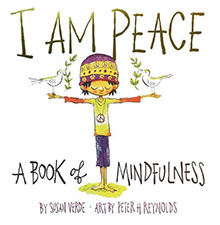
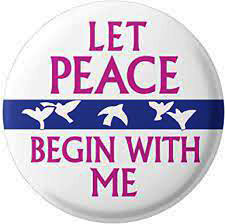
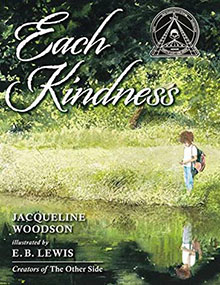
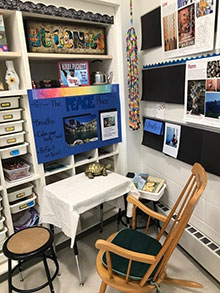
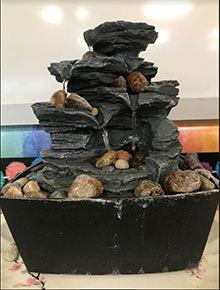
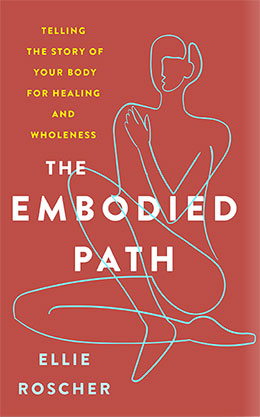
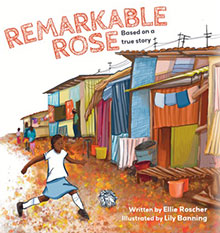
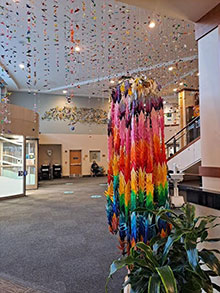
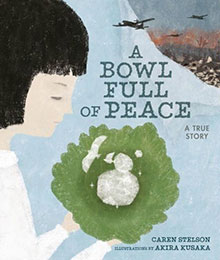
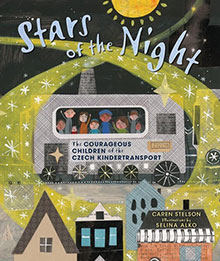
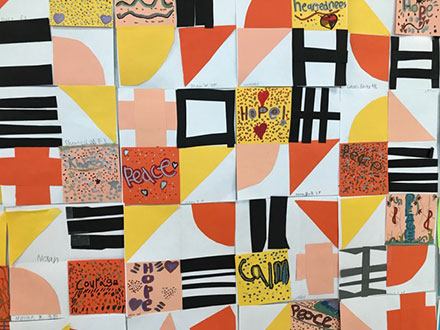
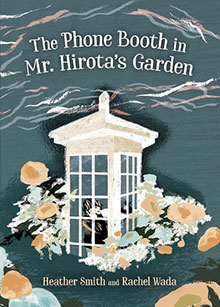
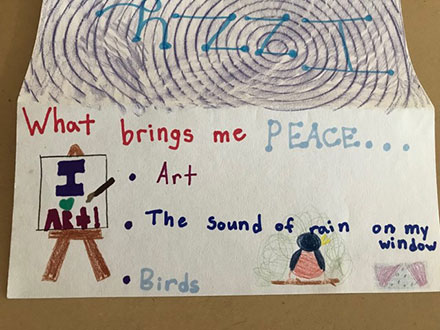
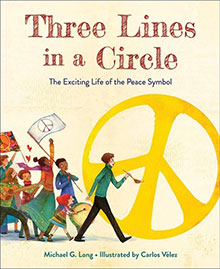
Thank you for these four years of columns, and the ways that you made peace tangible for your readers. You’ve introduced me to books I would have never known, and you’ve modeled ways to be peacemakers. Your ripples continue to resonate.
Aw David, you are so kind. Thank you for these lovely remarks.
In friendship,
Carne